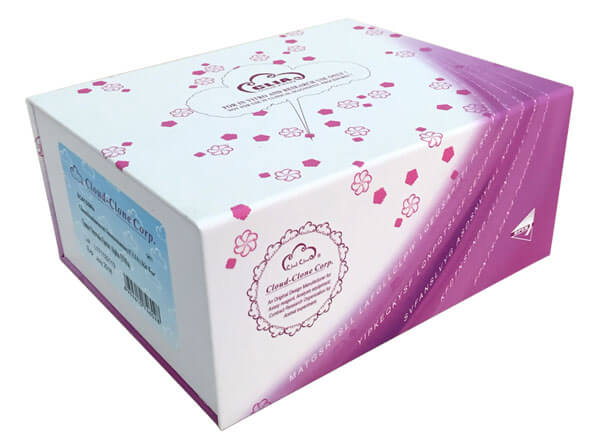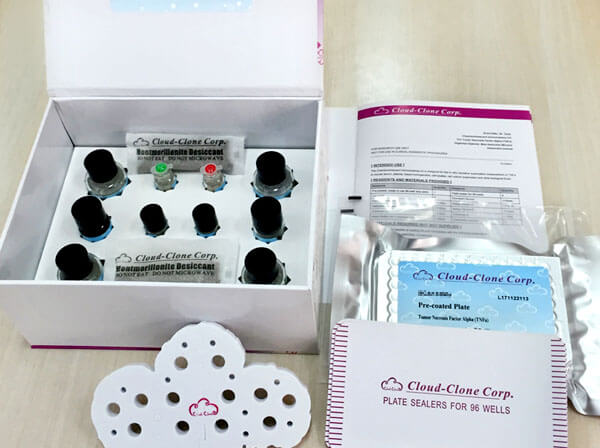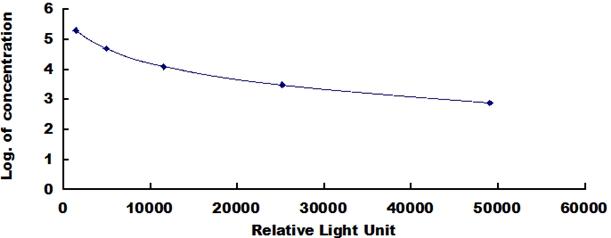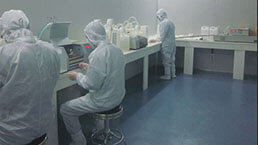CLIA Kit for Alpha-Tocopherol (TCPa) 

VE; Vitamin E; α-TCP; α-Tocopherol
- UOM
- FOB US$ 571.00 US$ 816.00 US$ 3,672.00 US$ 6,936.00 US$ 57,120.00
- Quantity
Overview
Properties
- Product No.CCA922Ge
- Organism SpeciesPan-species (General) Same name, Different species.
- ApplicationsChemiluminescent immunoassay for Antigen Detection.
Research use only - DownloadInstruction Manual
- CategoryMetabolic pathwayNutrition metabolism
Sign into your account
Share a new citation as an author
Upload your experimental result
Review

Contact us
Please fill in the blank.
Recovery
Matrices listed below were spiked with certain level of Alpha-Tocopherol (TCPa) and the recovery rates were calculated by comparing the measured value to the expected amount of Alpha-Tocopherol (TCPa) in samples.
| Matrix | Recovery range (%) | Average(%) |
| serum(n=5) | 80-99 | 89 |
| EDTA plasma(n=5) | 80-92 | 85 |
| heparin plasma(n=5) | 93-104 | 101 |
Precision
Intra-assay Precision (Precision within an assay): 3 samples with low, middle and high level Alpha-Tocopherol (TCPa) were tested 20 times on one plate, respectively.
Inter-assay Precision (Precision between assays): 3 samples with low, middle and high level Alpha-Tocopherol (TCPa) were tested on 3 different plates, 8 replicates in each plate.
CV(%) = SD/meanX100
Intra-Assay: CV<10%
Inter-Assay: CV<12%
Linearity
The linearity of the kit was assayed by testing samples spiked with appropriate concentration of Alpha-Tocopherol (TCPa) and their serial dilutions. The results were demonstrated by the percentage of calculated concentration to the expected.
| Sample | 1:2 | 1:4 | 1:8 | 1:16 |
| serum(n=5) | 98-105% | 96-104% | 97-105% | 88-95% |
| EDTA plasma(n=5) | 80-102% | 83-94% | 80-98% | 80-97% |
| heparin plasma(n=5) | 81-98% | 79-90% | 91-99% | 98-105% |
Stability
The stability of kit is determined by the loss rate of activity. The loss rate of this kit is less than 5% within the expiration date under appropriate storage condition.
To minimize extra influence on the performance, operation procedures and lab conditions, especially room temperature, air humidity, incubator temperature should be strictly controlled. It is also strongly suggested that the whole assay is performed by the same operator from the beginning to the end.
Reagents and materials provided
| Reagents | Quantity | Reagents | Quantity |
| Pre-coated, ready to use 96-well strip plate | 1 | Plate sealer for 96 wells | 4 |
| Standard | 2 | Standard Diluent | 1×20mL |
| Detection Reagent A | 1×120µL | Assay Diluent A | 1×12mL |
| Detection Reagent B | 1×120µL | Assay Diluent B | 1×12mL |
| Substrate A | 1×10mL | Substrate B | 1×2mL |
| Wash Buffer (30 × concentrate) | 1×20mL | Instruction manual | 1 |
Assay procedure summary
1. Prepare all reagents, samples and standards;
2. Add 50µL standard or sample to each well.
And then add 50µL prepared Detection Reagent A immediately.
Shake and mix. Incubate 1 hour at 37°C;
3. Aspirate and wash 3 times;
4. Add 100µL prepared Detection Reagent B. Incubate 30 minutes at 37°C;
5. Aspirate and wash 5 times;
6. Add 100µL Substrate Solution. Incubate 10 minutes at 37°C;
7. Read RLU value immediately.

Test principle
The microplate provided in this kit has been pre-coated with a monoclonal antibody specific to Alpha-Tocopherol (TCPa). A competitive inhibition reaction is launched between biotin labeled Alpha-Tocopherol (TCPa) and unlabeled Alpha-Tocopherol (TCPa) (Standards or samples) with the pre-coated antibody specific to Alpha-Tocopherol (TCPa). After incubation the unbound conjugate is washed off. Next, avidin conjugated to Horseradish Peroxidase (HRP) is added to each microplate well and incubated. The amount of bound HRP conjugate is reverse proportional to the concentration of Alpha-Tocopherol (TCPa) in the sample. Then the mixture of substrate A and B is added to generate glow light emission kinetics. Upon plate development, the intensity of the emitted light is reverse proportional to the Alpha-Tocopherol (TCPa) level in the sample or standard.
Giveaways
Increment services
Citations
- Evaluation of enzymatic and non- enzymatic antioxidant status in seminal plasma of Iraqi Infertile MenCom:Source
- Effect of vitamin E on cerebral cortical oxidative stress and brain-derived neurotrophic factor gene expression induced by hypoxia and exercise in rats.PubMed: 25903950
- The potential effects of antioxidant feed additives in mitigating the adverse effects of cornnaturally contaminated with Fusarium mycotoxins on antioxidant systems in the intestinal mucosa, plasma, and liver in weaned pigs.Pubmed:27021614
- Vitamin E and caloric restriction promote hepatic homeostasis through expression of connexin 26, N-cad, E-cad and cholesterol metabolism genespubmed:27816814
- Ultrasonication of in vitro potato single node explants: Activation and recovery of antioxidant defence system and growth responsespubmed:29102903
- Oxidative stress in lung cancer patients is associated with altered serum markers of lipid metabolismPubmed: 30973911
- Prooxidant effect of α-tocopherol in pancreatic tumors.
- Vitamin A, C, D, E and B12 Levels in Leprosy: A Case Control Study











